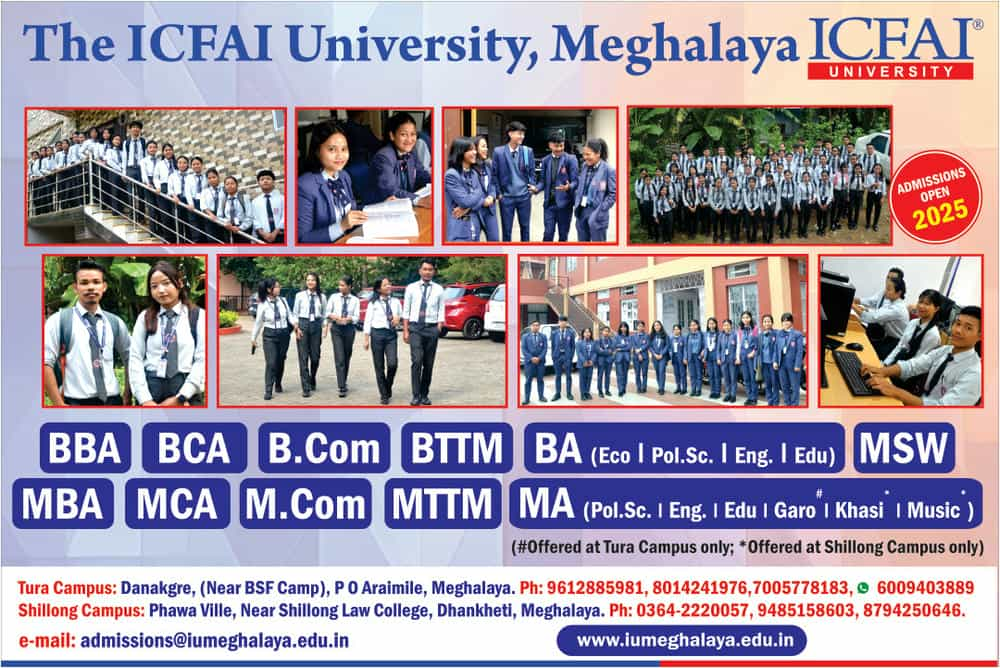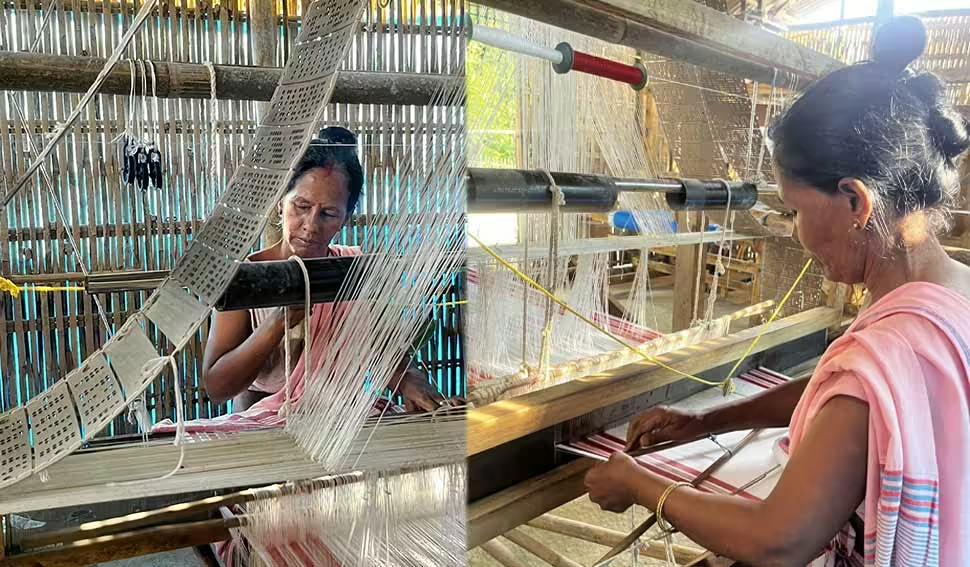Weaving evolves from a cultural tradition into a symbol of empowerment in Assam’s Borchapori village

Weaving in Assam transcends mere craftsmanship; it embodies a rich tapestry of artistic expression and cultural pride. The state boasts a vibrant handloom industry, with thousands of weavers contributing to its intricate narrative. Among these skilled artisans, the women of Borchapori, a serene village nestled in Borapathar, Golaghat, are leading a remarkable transformation.
In Assamese society, weaving has long been considered a traditional role for women, often regarded as a domestic duty passed down through generations. However, the women of Borchapori have redefined this expectation. They viewed their craft not just as a responsibility but as an opportunity for empowerment and self-reliance. Through their mastery of weaving, they have turned a deeply ingrained cultural practice into a sustainable livelihood, fueling their economic independence and societal progress.
By embracing weaving as a means of shaping their own futures, these women have moved beyond the traditional confines of the craft, using it as a tool for personal and communal empowerment. Today, their work stands as a testament to the enduring strength of Assamese handloom, as well as the transformative potential of women-led enterprises in rural India.
One such story is that of Shrimati Mohila Saikia, now a weaver at the Borchapori Handloom Centre. This centre was launched under the CSR program of Cairn to promote sustainable livelihoods among the self-help groups in Borapathar. It stands as a shining example of public-private collaboration for community empowerment.
Hazarigaon, being a Tea Tribal area, previously had limited access to the benefits of the Assam State Rural Livelihood Mission (ASRLM) and the Handloom Department. The Cairn CSR team played a critical role in connecting the local communities to these resources, ensuring that they could tap into the Government of Assam’s Swanibhar Nari scheme.
Under this scheme, each registered Self-Help Group (SHG) has been producing over 2,000 gamosas (a cultural symbol of Assam) which are directly procured by the Handloom Department, Government of Assam, at a fixed price of INR 270 per unit. In total, the 28 SHGs received an order to produce 56,000 units of gamosa, with an estimated budget of Rs 1.51 cr. As of now, about 30% of the orders have already been delivered to the Government of Assam.
The impact has been remarkable, leading to a significant boost in self-confidence and livelihood opportunities for women like Mohila. Her journey began in her teenage years, filled with aspirations that once seemed unattainable. “Weaving was not just a task for us; it was a way to shape our destiny,” she recalls. With determination, she and other women of Borchapori found hope and empowerment through the Handloom Centre and the Swanibhar Nari Scheme.
Cairn is planning to expand the Sustainable Livelihood Program by providing three additional weaving looms, including a Jacquard machine for each. Additionally, there are plans to upgrade the existing handloom center through area expansion, structural improvements, and connecting with more SHG
With support from the company, the production efficiency of the women beneficiaries has increased by 30%, potentially leading to improved livelihoods. “The new machines have transformed our work. Earlier, it would take 2-3 days to weave just one gamosa. Now, I can produce 4-5 in a single day,” Mohila says with pride. The range of products has also expanded to include mekhela chadors, selengs, shawls, and handkerchiefs. For the sustainable market linkage of the project, a discussion is being processed with the Export Promotion Council for Handicrafts (EPCH), Guwahati.
This initiative has not only transformed the lives of individual weavers but has also had a ripple effect on the entire community. “These interventions have given us a chance to dream bigger and achieve more,” says Mohila, speaking on behalf of 60 SHGs and 600 empowered women impacted by this initiative.
The story of Borchapori’s women weavers is a powerful example of the broader narrative of empowerment sweeping across Golaghat. Their journey demonstrates how progress is driven by collective effort and opportunity. As Dr. B.R. Ambedkar famously said, “The progress of a society is best measured by the progress of its women.” In Borchapori, this transformation is not just visible — it is woven into the very fabric of their lives.




Leave a Reply